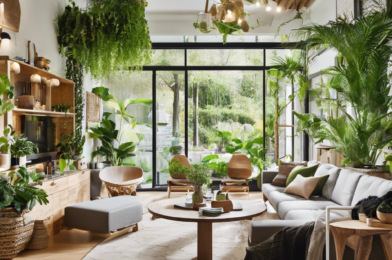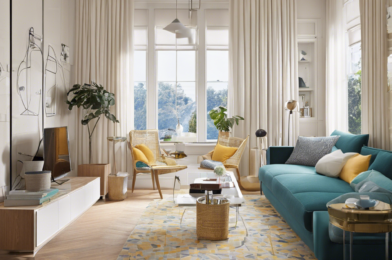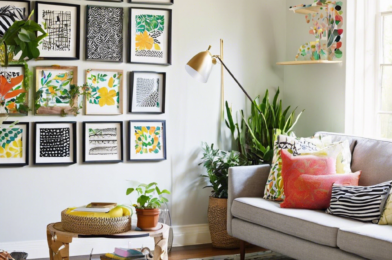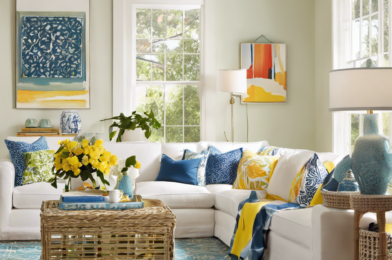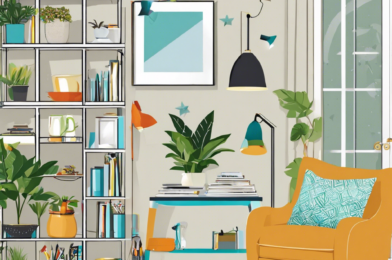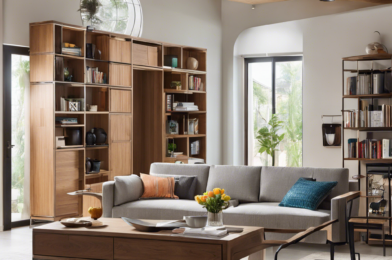**First Paragraph:**
Eco-friendly interior design is gaining traction as consumers become increasingly conscious of the environmental impact of their choices. It promotes the use of sustainable materials, energy-efficient solutions, and non-toxic products to create stylish and healthy living spaces. From furniture to lighting, each element is carefully chosen to reduce our carbon footprint and promote a greener lifestyle. This article will explore the key considerations and stylish choices available for those seeking an eco-friendlier approach to designing their homes.
**Second Paragraph:**
One of the fundamental principles of eco-friendly interior design is the selection of sustainable materials. Opting for natural, organic, and locally sourced options reduces the environmental impact associated with transportation and synthetic production processes. Wood, for example, is a renewable resource, but it’s important to choose wood certified by the Forest Stewardship Council (FSC), ensuring it comes from responsibly managed forests. Bamboo, a rapidly renewable resource, is another excellent choice for flooring or furniture due to its quick regeneration rate.
**Third Paragraph:**
Along with wood and bamboo, other natural materials like wool, cotton, and linen are great choices for eco-friendly textiles. When selecting fabrics, look for organic options free from harmful chemicals and dyes. Natural fibers are not only kinder to the environment but also tend to be more durable and breathable, making them ideal for a range of applications, from upholstery to curtains.
**Fourth Paragraph:**
Another key consideration is the reduction of waste. This can be achieved by upcycling and repurposing existing items or choosing second-hand furniture. Vintage and antique pieces not only add a unique touch to your space but also reduce the demand for new manufacturing, minimizing the environmental impact of production and transportation. Upcycling, the process of transforming discarded items into something new, is a creative way to give pre-loved pieces a modern twist.
**Fifth Paragraph:**
When it comes to lighting, opting for energy-efficient options is a must. LED lights use significantly less energy than traditional incandescent bulbs and have a longer lifespan, reducing waste. Additionally, take advantage of natural light wherever possible. Large windows and skylights not only brighten up your space but also reduce the need for artificial lighting during the day, cutting down on energy costs and carbon emissions.
**Sixth Paragraph:**
In recent years, interior designers have increasingly embraced biophilic design principles, which involve incorporating natural elements into the built environment. This can include the use of natural materials, as mentioned earlier, but also the introduction of indoor plants and the creation of nature-inspired patterns and textures. Biophilic design has been shown to have positive effects on our well-being, reducing stress and improving mood.
**Seventh Paragraph:**
In addition to the visual appeal and health benefits of biophilic design, it also contributes to improved indoor air quality. Indoor plants act as natural air purifiers, absorbing carbon dioxide and releasing oxygen. Certain varieties, such as peace lilies, spider plants, and aloe vera, are known for their air-purifying capabilities, removing common volatile organic compounds (VOCs) from the air.
**Eighth Paragraph:**
When selecting paints and finishes, opt for low- or no-VOC options to minimize the release of harmful chemicals into the air. VOCs, often found in traditional paint formulations, can contribute to air pollution and have negative health impacts. Water-based paints and natural finishes, such as clay and chalk-based paints, are safer alternatives that reduce indoor air pollution and provide a healthier living environment.
**Ninth Paragraph:**
Another way to enhance the sustainability of your interior design is by supporting local artisans and craftspeople. Locally made products reduce the carbon emissions associated with transportation, and you also get the added benefit of unique, handcrafted pieces that showcase local talent and cultural heritage. From pottery and textiles to custom-made furniture, incorporating these items adds a personal and sustainable touch to your space.
**Tenth Paragraph:**
Sustainability doesn’t have to come at the expense of style. Eco-friendly interior design offers a wealth of aesthetically pleasing options that rival their conventional counterparts. For example, instead of opting for a standard glass or metal coffee table, consider a live-edge wooden table that showcases the natural beauty of the wood grain. Beautiful and unique, these tables are conversation starters and add a touch of nature to your living room.
**Eleventh Paragraph:**
When it comes to flooring, there are numerous stylish and sustainable choices available. Cork, for instance, is a renewable and biodegradable material that offers a soft and comfortable surface, ideal for kitchens or standing areas. Similarly, linoleum, made from natural materials like linseed oil and wood flour, is an environmentally friendly alternative to vinyl flooring. It comes in a wide range of colors and patterns, offering design flexibility.
**Twelfth Paragraph:**
If you’re looking for a more luxurious option, consider recycled glass countertops. These stunning surfaces are made from post-consumer glass, such as recycled beer and wine bottles, and offer a unique and eco-friendly alternative to traditional stone or synthetic countertops. The recycled glass fragments create a beautiful, shimmering effect and can be customized with different colors and textures to suit your taste.
**Thirteenth Paragraph:**
For a natural and sustainable backsplash or shower wall, pebble tile is an excellent choice. Made from smooth river stones, these tiles bring the beauty of nature into your home while being extremely durable and low-maintenance. The tiles come in a variety of colors and sizes, allowing for endless design possibilities, whether you’re creating a feature wall or a subtle accent.
**Fourteenth Paragraph:**
When furnishing your outdoor space, look for furniture made from recycled plastics. From lounge chairs to dining sets, recycled plastic furniture offers the durability and weather resistance of traditional plastic without the environmental impact of virgin materials. Many companies now offer stylish and comfortable options that rival the look and feel of natural wicker or wood.
**Fifteenth Paragraph:**
In addition to recycled materials, it’s important to consider products that can be recycled at the end of their lifespan. Opt for furniture and décor items that are easily disassembled and made from materials that can be recycled or composted. This circular design approach ensures that the products you bring into your home can be responsibly disposed of without contributing to landfill waste.
**Sixteenth Paragraph:**
For a truly eco-conscious bedroom, look beyond conventional mattresses. Natural and organic mattresses made from materials like latex, wool, and cotton offer a comfortable and healthy night’s sleep. Free from harmful chemicals and treated with natural flame retardants, these mattresses are better for both you and the environment. Many companies are now offering innovative designs made from sustainable materials.
**Seventeenth Paragraph:**
When it comes to accessories and décor, less is often more. Instead of filling your space with numerous mass-produced items, select a few carefully chosen statement pieces. This could be a stunning ceramic vase handmade by a local artist or a macramé wall hanging made from natural fibers. These unique items add character to your home and support local artisans and sustainable practices.
**Eighteenth Paragraph:**
Eco-friendly interior design is about more than just the materials and products you choose; it’s a holistic approach that considers the entire lifecycle of your design choices. From sourcing and manufacturing to eventual disposal, each step presents an opportunity to reduce your environmental impact. By embracing sustainability, you can create a beautiful and conscious space that promotes a healthier planet and a healthier you.
